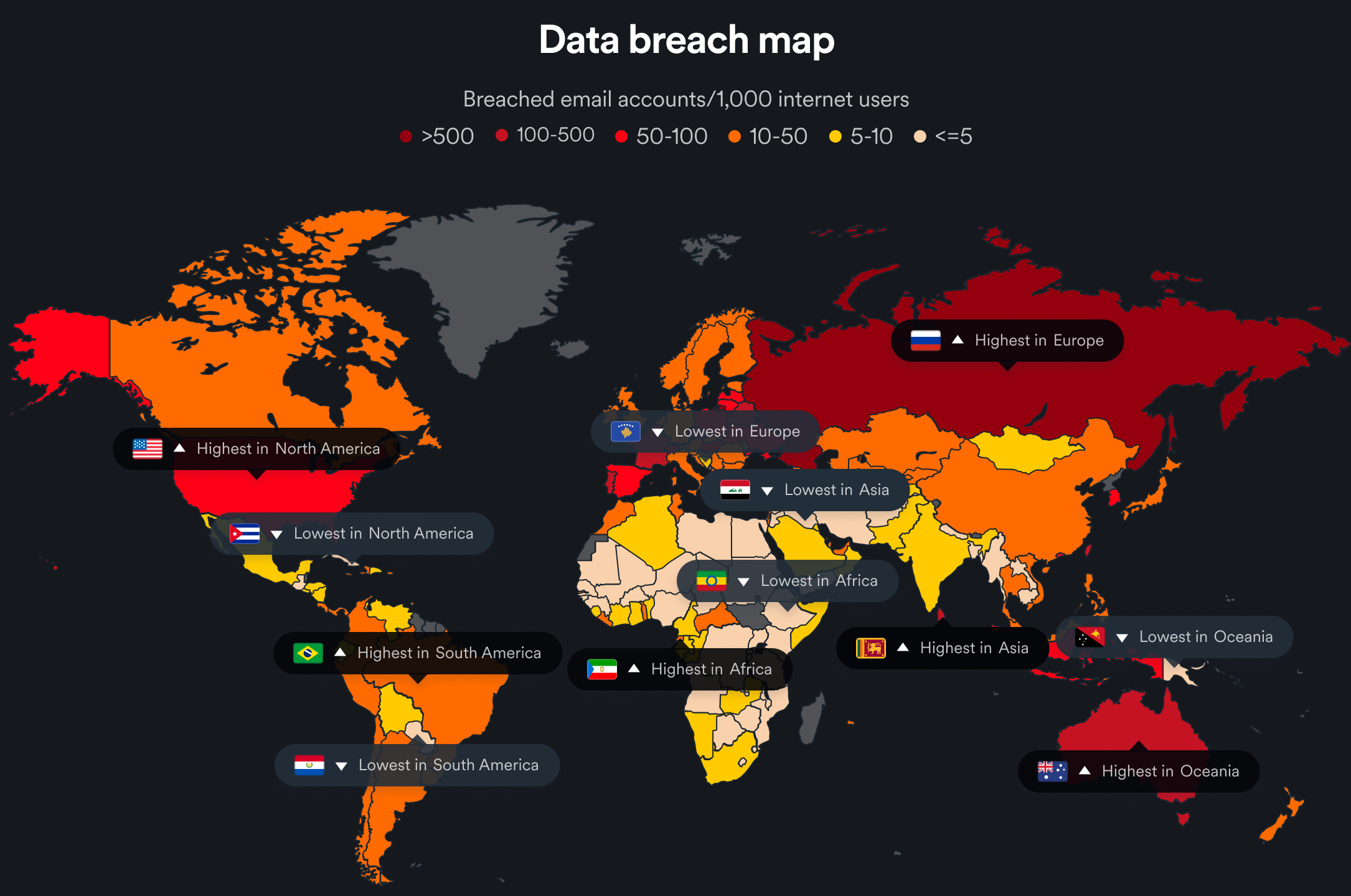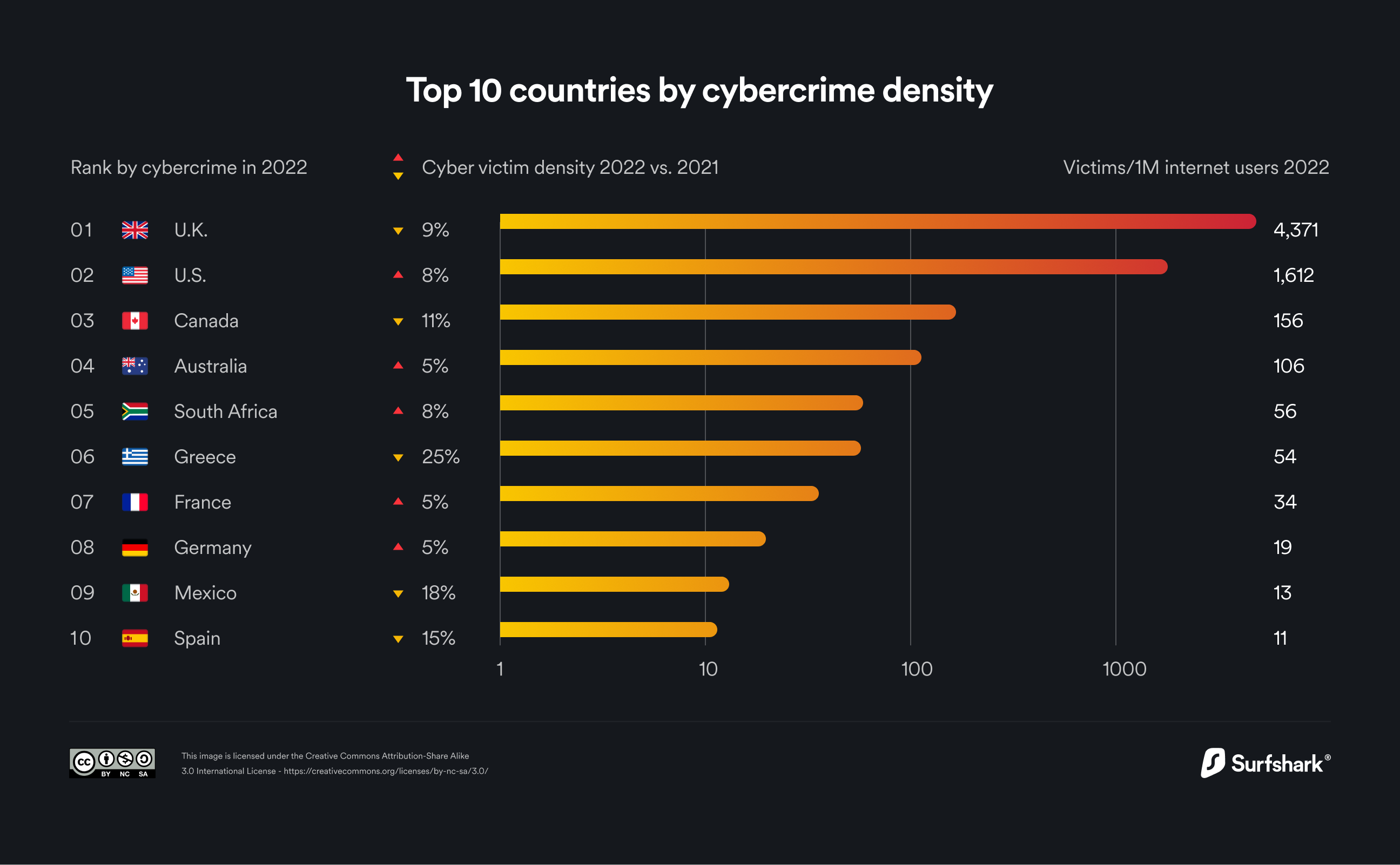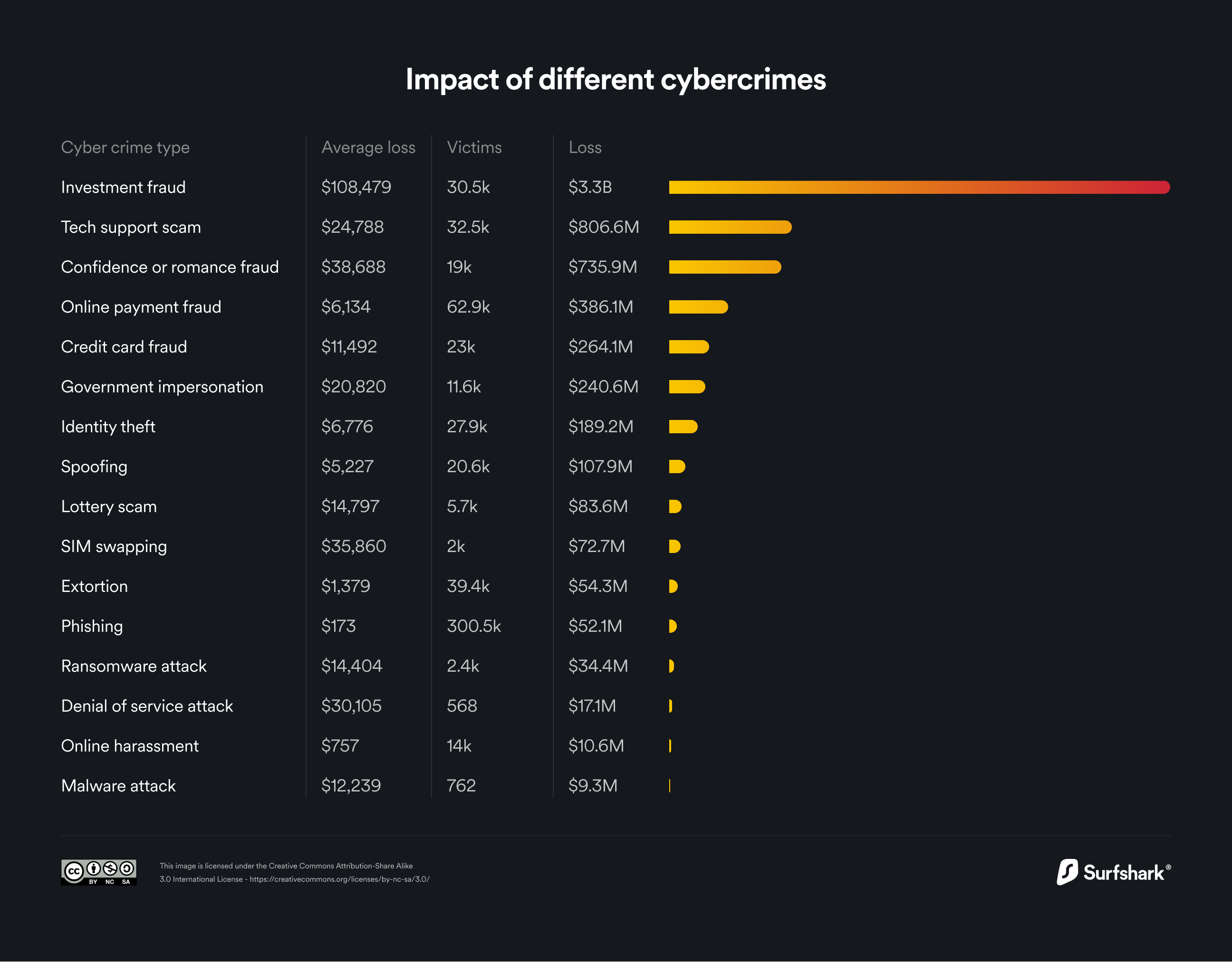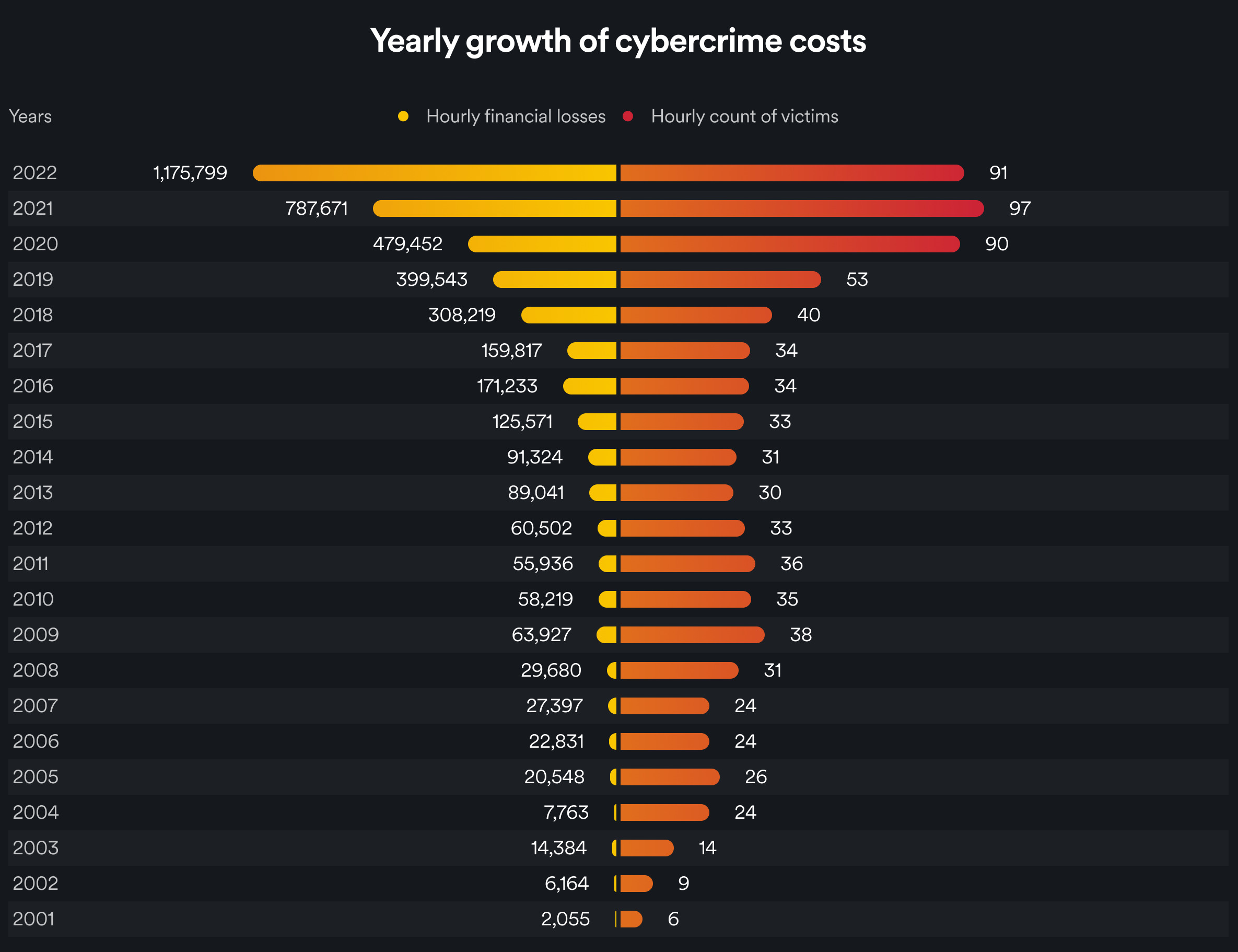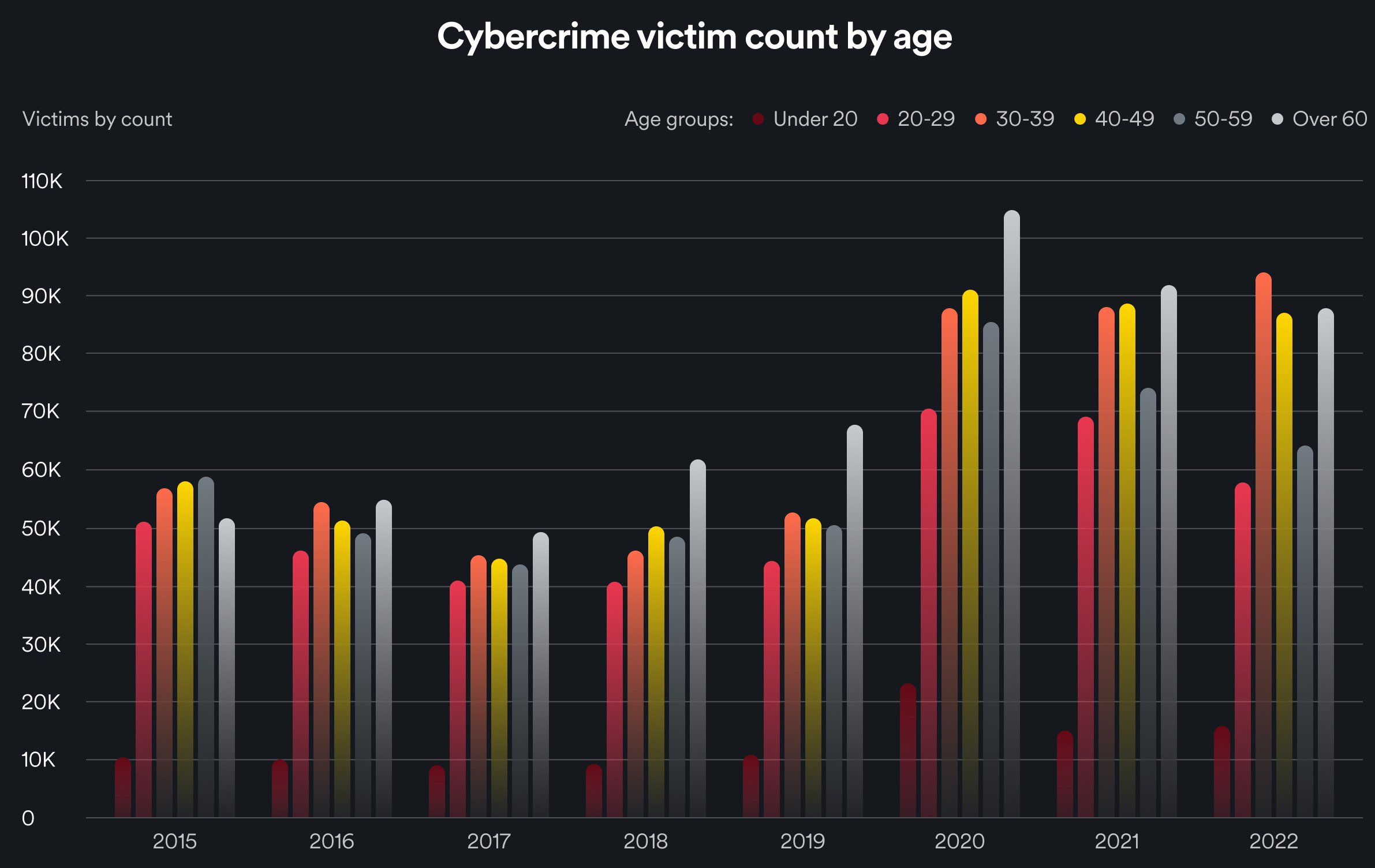As the world continues to become more connected digitally, so does the chance of being a victim of cybercrime. However, data has shown us that cybercrime is seldom random; usually it occurs because data was leaked by a company or the individual themselves, which gave the perpetrators the information necessary to carry out their scams. Here are two of the most popular: phishing and investment fraud.
Phishing
In looking at the data, we see that when it comes to email data breaches, hackers target some countries more than others. A lot of blame for many of the past breaches has been directed at Russia.
But as the infographic shows, Russia was targeted more than any other country … mainly because their email account information is leaked 17 times more than the global average. Put into perspective, 8 out of 10 Russian internet users were breached in 2022. France came in second with 3 out of 10.
When taken as a whole, Europe as a continent had the highest breach rate at 1 in 5. This ranks as 4 times greater than the global average for continents.
Data courtesy of SurfShark®
Cybercrime by Country
As far as cybercrime densities as a whole, and not just email breaches, the U.K has topped the list for the 3rd year in a row. Their statistic came in at 4,371 victims per 1 million Internet users; however, that number is better than previous years considering they had an 8.6% drop in 2022 from the numbers the year before. Four other countries also saw drops from their 2021 cybercrime rates: Canada, Greece, Mexico and Spain. In fact, Greece was able to drop their rate by 25%. By comparison, the U.S. rate went up by 8% during the same timeframe as did Australia, South Africa and Germany, 5%, 8% and 5% respectively.
Data courtesy of SurfShark®
Investment Fraud
When there is a cybercrime reported, much of the attention is directed as the cause being malware. But the data shows that it is the lowest type of cybercrime by comparison coming in at 762 victims and $9.3 million in loss. The leader of the crimes is investment fraud with 30,500 victims at a loss of $3.3 billion.
Data courtesy of SurfShark®
Cybercrime On the Increase
It is no surprise that the rate of cybercrime is rising as the world becomes more connected. The data showed that in 2001 there were six victims per hour with a total hourly financial loss of $2,055. Twenty years later, the number of victims had risen to 97 per hour with an hourly loss of $787,761.
Data courtesy of SurfShark®
Cybercrime By Age
Most people think that the older population is at more risk of being a victim of scams and cybercrime. And until 2021, that was true.
But now, the 30 to 39 age group is affected the most. The number of incidents in this age group rose from 88,400 in 2021 to 94,500 in 2022. A large portion of these were crypto-investment fraud schemes with crypto being a popular investment strategy with those in this age group.
The group most resilient to cybercrime historically has been the under 20 age group. But even they saw a large increase in incidents with an almost 6% increase – from 14,900 incidents in 2021 to 15,800 in 2022 … but still far lower than any other age group.
Data courtesy of SurfShark®
If historical data is a reliable predictor of the future, cybercrime will keep rising as third world countries become more digitally connected globally. However, as individuals and companies, we can protect ourselves by practicing good email and network practices by using zero trust policies, two-step verification systems and not releasing information to any unknown entities, thus minimizing the exposure of our information and access to our computer systems.

